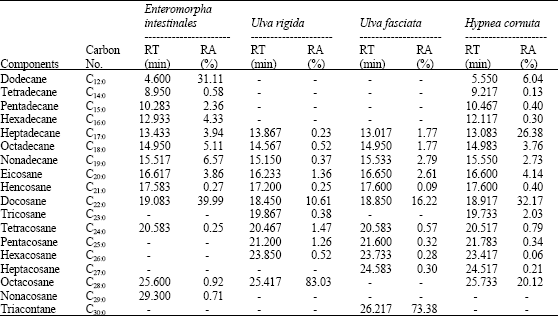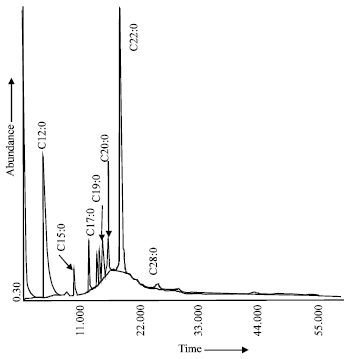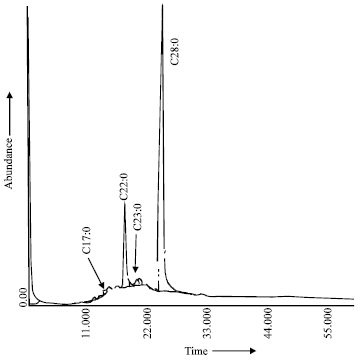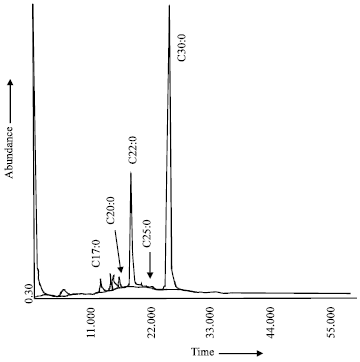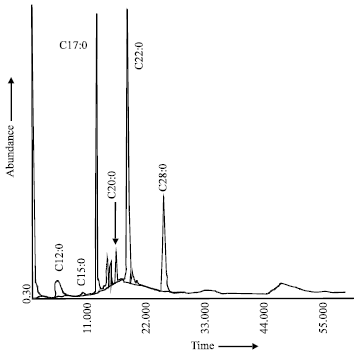Research Article
Comparative Phycochemical Investigation of Hydrocarbons Content on Some Marine Seaweeds Algae
1Department of Chemistry, Faculty of Science, Suez Canal University, BP 41522, Ismailia, Egypt
Gehan A. El-Shoubaky
2Department of Biological and Geological Sciences, Faculty of Education, Suez Canal University, BP 41522, Port-Said, Egypt
Essam Abd E. Salem
3Department of Botany, Faculty of Science, Suez Canal University, BP 41522, Ismailia, Egypt









